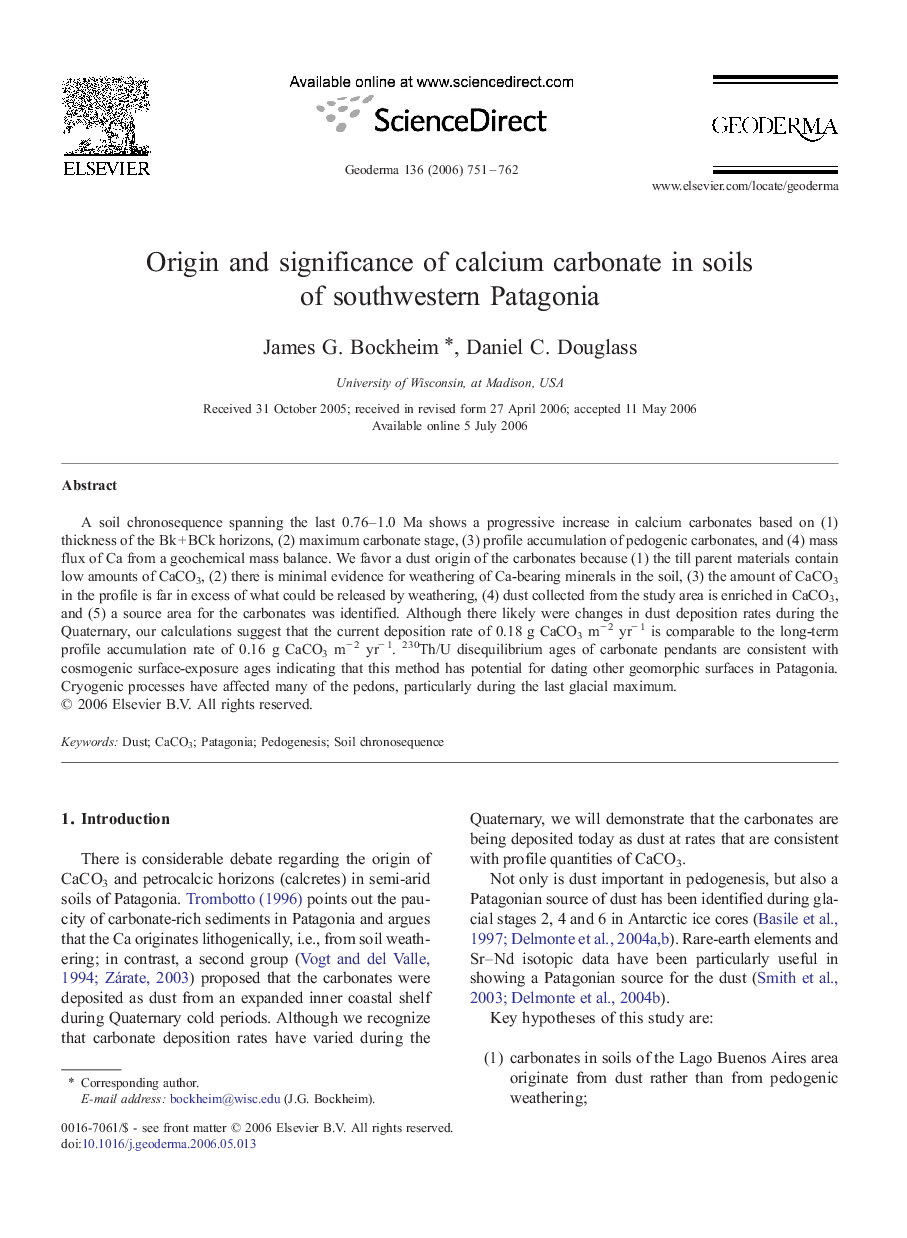| Article ID | Journal | Published Year | Pages | File Type |
|---|---|---|---|---|
| 4575647 | Geoderma | 2006 | 12 Pages |
A soil chronosequence spanning the last 0.76–1.0 Ma shows a progressive increase in calcium carbonates based on (1) thickness of the Bk + BCk horizons, (2) maximum carbonate stage, (3) profile accumulation of pedogenic carbonates, and (4) mass flux of Ca from a geochemical mass balance. We favor a dust origin of the carbonates because (1) the till parent materials contain low amounts of CaCO3, (2) there is minimal evidence for weathering of Ca-bearing minerals in the soil, (3) the amount of CaCO3 in the profile is far in excess of what could be released by weathering, (4) dust collected from the study area is enriched in CaCO3, and (5) a source area for the carbonates was identified. Although there likely were changes in dust deposition rates during the Quaternary, our calculations suggest that the current deposition rate of 0.18 g CaCO3 m− 2 yr− 1 is comparable to the long-term profile accumulation rate of 0.16 g CaCO3 m− 2 yr− 1. 230Th/U disequilibrium ages of carbonate pendants are consistent with cosmogenic surface-exposure ages indicating that this method has potential for dating other geomorphic surfaces in Patagonia. Cryogenic processes have affected many of the pedons, particularly during the last glacial maximum.
